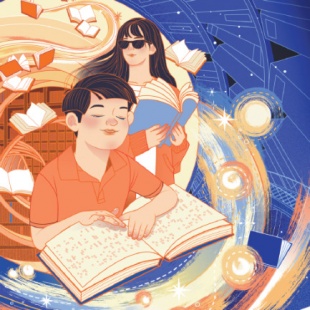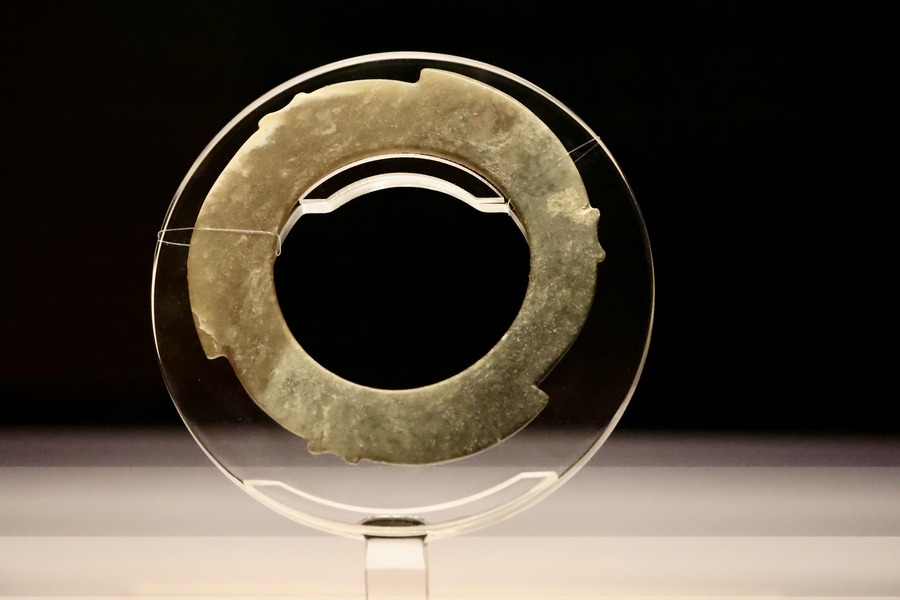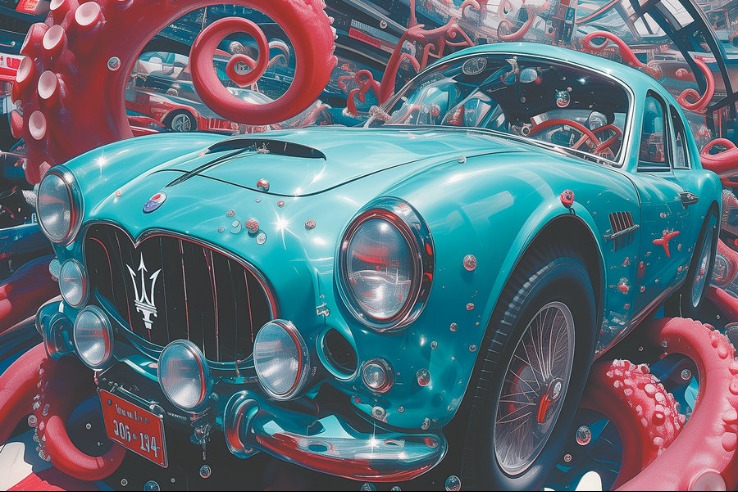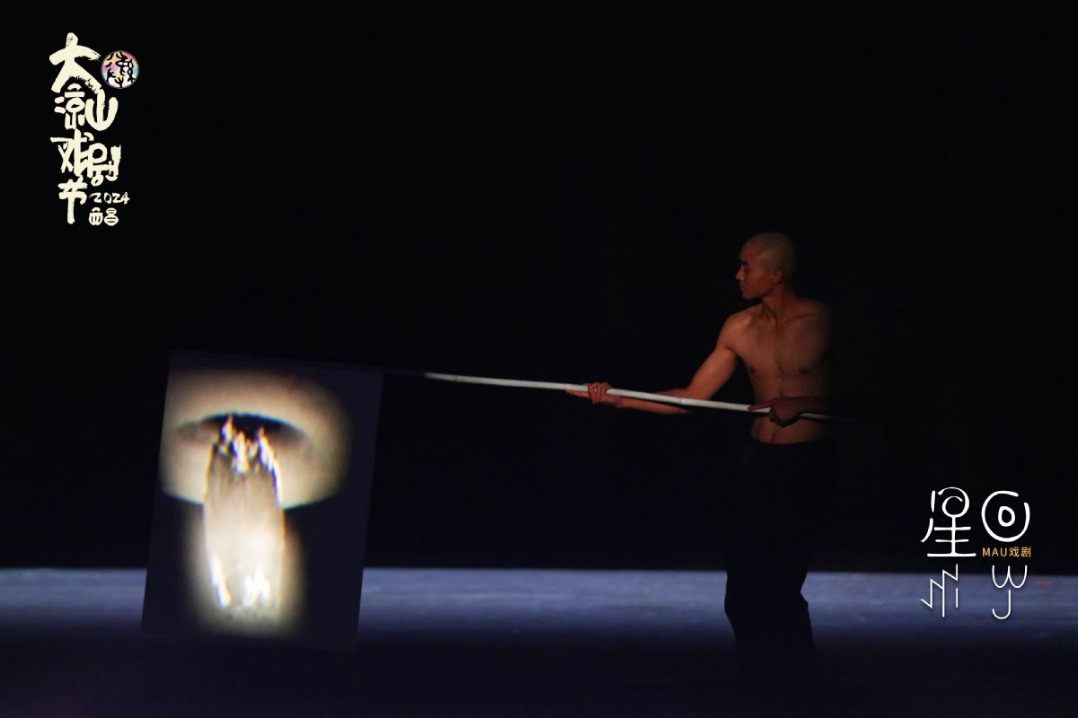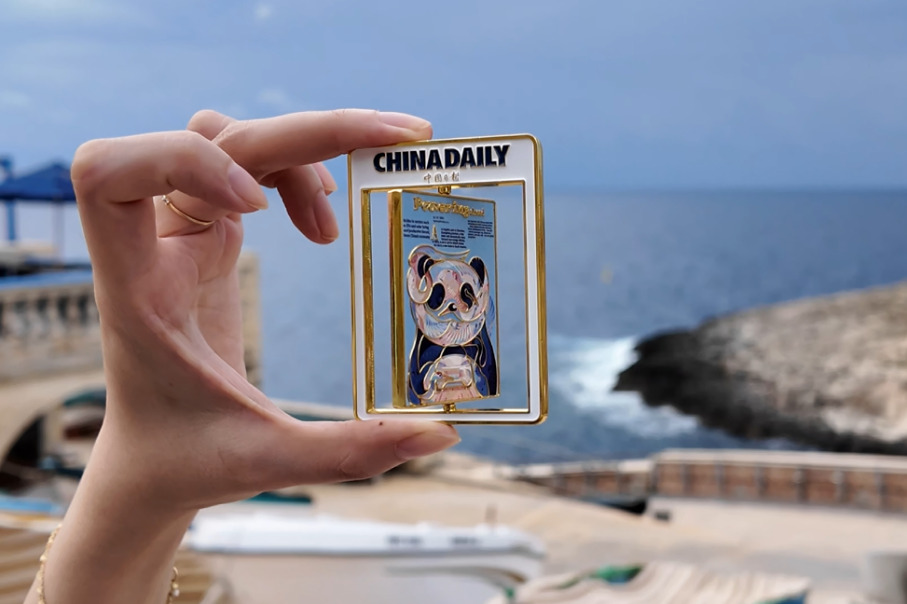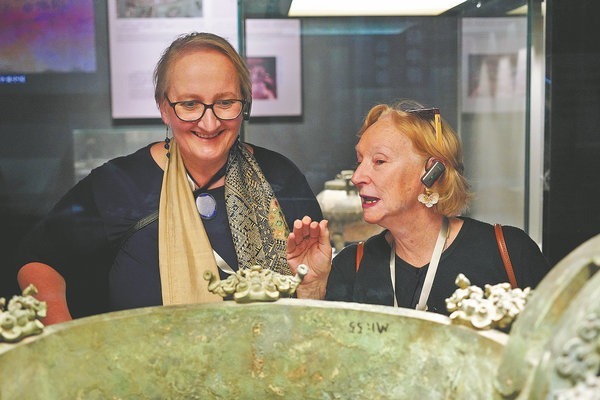Books that touch you, exhibits that move you

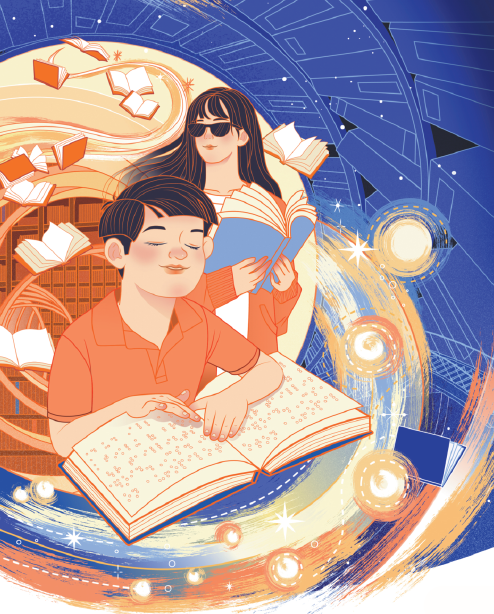
Anyone who has never been to China Braille Library will conjure up various images of the place. Maybe there are wall-to-wall shelves with books piled all the way up, some covered in dust. Maybe a librarian with a serious look, typically a man in his 50s wearing old-fashioned reading glasses, sits behind a desk and issues books that borrowers pick from the shelves.
Books, multimedia
That is not how things are at CBL, on the third floor of which are several spacious reading rooms with large windows through which sunshine and wind breeze in bringing with them pleasant smells.
The library has 18,269 kinds of books, including 3,523 kinds of braille books, 809 kinds of braille journals, 419 kinds of books written in both braille and visible language, and 142 kinds of children's ordinary books.
The library is open to the 17 million visually impaired people in China. This library has an arrangement with China Post, under which it has manufactured a special kind of mailing bag with cards where the address of the library is printed on one side.
The borrowers can make phone calls, or send WeChat messages or emails to the librarian, listing the books they are seeking. The librarian then fishes out these books, puts them into the mailing bag, fills in the address of the borrower on the other side of the card and waits for a postman to pick up the bag.
Whenever the borrower finishes reading, he or she needs to put the books back into the bag, turn the address card around and put it into a postbox for the books to return to the library.
There are at least four big reading rooms inside the CBL building.
In the age of multimedia, books have taken various forms. That applies to the world of the visually impaired, too.
CBL offers its readers a smart listening device that looks like an old-fashioned cellphone. Guided by a recorded voice, a user has to just press a few buttons to gain access to 20 terabytes of audiobooks stored on the CBL website.
The smart listening device is part of a Digital Reading Project for the Blind launched by China Disabled Persons' Federation in 2017.
As part of the program, the government purchased 200,000 such devices and distributed them to the over 400 Braille libraries and barrier-free reading rooms nationwide for lending to the visually impaired. Now, 80 percent of them are still in use, which means more than 160,000 visually impaired people are benefiting from it.
Dedicated museum
The CBL is more than just a storehouse of books; it is a place where braille books and other conveniences for the visually impaired are gathered.
On the fifth floor of the building, for example, there is a tactile museum. At the door, one can borrow earphones to listen to prerecorded voices of professional guides taking the listener all the way from the historical wonders of ancient China such as the Great Wall, to the history of Traditional Chinese Medicine and its herbs, and ancient technological achievements. The museum also exhibits models of rockets.
Unlike in other museums, at CBL visitors can touch almost every exhibit, because that's an important way for the visually impaired to understand things.
On the same floor, there is an experiential museum of the culture of the blind that exhibits the history of braille in China and the world, as well as the history of CBL, how the Chinese version of braille based on pinyin was invented and how the idea of building a library for the visually impaired came into being.
CBL also has a 20-square-meter room called "Try Darkness", in which all the lights are switched off and the door is fully shut to not let in any light. It helps people understand how a visually impaired person feels, as they negotiate their way from the entrance to the exit by holding on to the walls for support.
While it takes just about 10 minutes, it feels like an hour-long journey. "When you are in the dark, you strive for light like a thirsty man strives for water," said Jiao Jiao, a woman who entered the room once.
On the fifth floor, there is a room exhibiting the latest technologies assisting the visually impaired. There is a reading machine that can magnify letters for people who are not visually impaired but with eyesight so bad they cannot even read the largest E on the eye chart.
The room also has a virtual reality helmet for people to see things on the screen inside. For the visually impaired, there is the wearable navigator, which is like a pair of glasses prompting the wearer what lies ahead. There are also touchable teaching devices for the visually impaired to understand things better.
Special cinema
On the fifth floor, there is also a Narrative Theater for the visually impaired, where a narrator explains the movie being screened. Visually impaired people come from as far as neighboring Hebei province to watch movies there.
On April 12, they screened He Is My Brother, the story of two brothers with autism. The audience comprised autistic people, people interested in the topic, and others.


